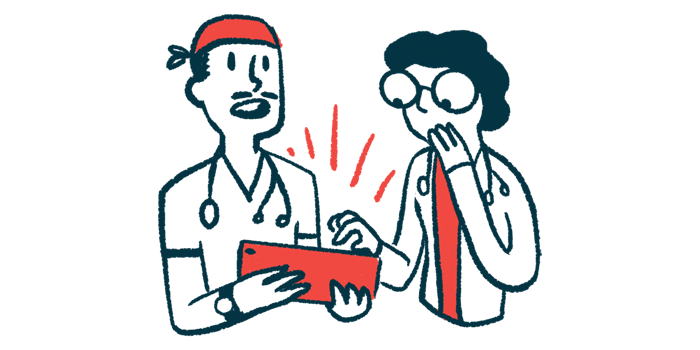Rates of SSc, Raynaud’s Likely Higher Among Post-9/11 Veterans

A higher rate of systemic sclerosis (SSc), very early diagnosis of systemic sclerosis (VEDOSS), and Raynaud’s phenomenon is evident among U.S. military veterans deployed in support of post-9/11 operations, compared with the general population, a study suggests.
The data, obtained through Veterans Health Administration (VHA) health records, highlight the need for better management and monitoring of these conditions in this population.
The study, “The frequency of Raynaud’s phenomenon, very early diagnosis of systemic sclerosis, and systemic sclerosis in a large Veteran Health Administration database,” was published in BMC Rheumatology and was conducted by researchers at the University of Utah and Salt Lake Veterans Affairs Medical Center. According to the team, this is the first reported evaluation of these diagnoses in a relatively young group of post-9/11 veterans.
Arteries leading to the extremities, primarily fingers and toes, are narrowed in Raynaud’s, causing discoloration and circulation problems. The condition is often triggered by cold climate, temperature shifts, or emotions.
Raynaud’s can also be associated with other medical disorders. In fact, it is one of the earliest symptoms of SSc, with almost all SSc patients developing the condition. Evidence has shown that identifying and treating Raynaud’s is “an opportunity for early diagnosis and treatment of SSc,” the researchers wrote.
VEDOSS criteria — which includes Raynaud’s and puffy fingers — tries to identify patients early in their disease course to prevent progression and organ damage.
The team had previously identified, based also on VHA data, several diagnostic features of SSc among veterans who had not been diagnosed with the condition.
Now, researchers assessed the prevalence of Raynaud’s, VEDOSS, and SSc in a cohort of soldiers under VHA care who had one or more post-9/11 deployments, particularly in Afghanistan or Iraq.
Of 606,692 veterans in this study (87% male), 857 had Raynaud’s (0.14%), 45 met potential VEDOSS criteria (0.01%), and 71 had a diagnosis of SSc (0.01%). The median age of Raynaud’s patients was under 29, whereas those with potential VEDOSS and SSc had a median age between 30 and 39.
The data showed that 63% of the SSc patients and fewer than half of those with Raynaud’s or potential VEDOSS were prescribed vasodilators, suggesting an underutilization of this standard of care therapy.
Diagnoses related to pain (back pain, neck pain, and other musculoskeletal/neuropathic pain) and depression were common in all groups. The high prevalence of these conditions may highlight the need for mood and pain management in SSc and related disorders, the team said.
Suicidal ideation was above 5% in all patient groups.
Using mathematical models taking into account several factors, researchers found that women and those younger than 50 had greater odds of each condition compared with those without any of these three disorders.
No difference was evident in the likelihood of Raynaud’s, potential VEDOSS, or SSc across military branches. However, Raynaud’s patients were more likely to be healthcare workers, those involved in engineering/maintenance, or craft workers, potentially indicating that those with Raynaud’s symptoms are more likely to be involved in fine motor activities that use their fingers, the team suggested.
“Alternatively, this may highlight the value of understanding occupational exposures that are unique to this patient population,” the researchers added, noting that exposure to products such as chemicals, solvents, and cleaning products could be greater among healthcare, engineering/maintenance, or craft workers.
Regarding sex, a higher rate of all three conditions was seen in male veterans compared with the general population. A greater likelihood of these disorders exists for female veterans.
“This study found that in … this health system, RP [Raynaud’s], VEDOSS and SSc occur possibly at a higher rate in men in the [veterans group] than the general population. The increased likelihood of RP, potential VEDOSS and SSc in Veteran females is consistent with estimates from other population-based studies of SSc and RP,” the researchers wrote. SSc and Raynaud’s are known to affect women more often than men.
Overall, this study in a specific population “suggests an under-diagnosis of these conditions [RP, VEDOSS, and SSc] in Veterans and the need for better screening and treatment of vasculopathy,” or diseases affecting the blood vessels, the team concluded.







